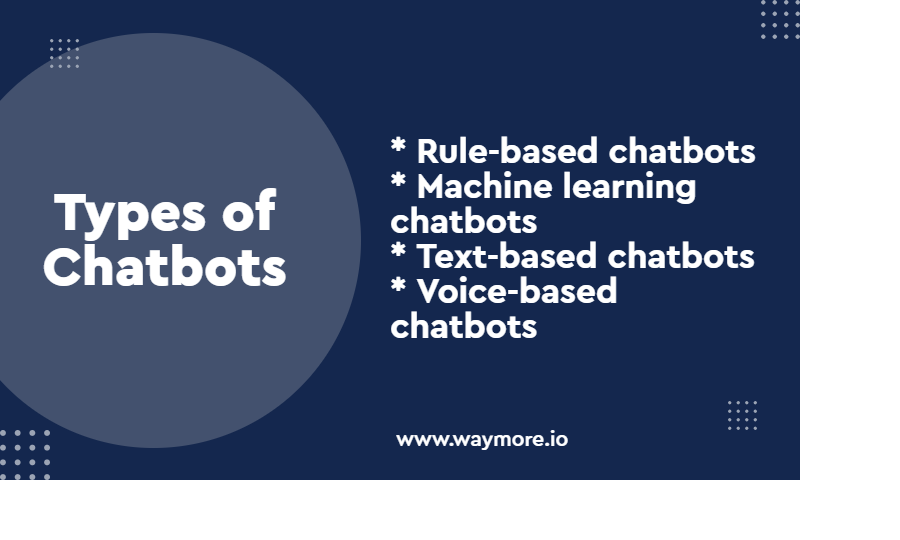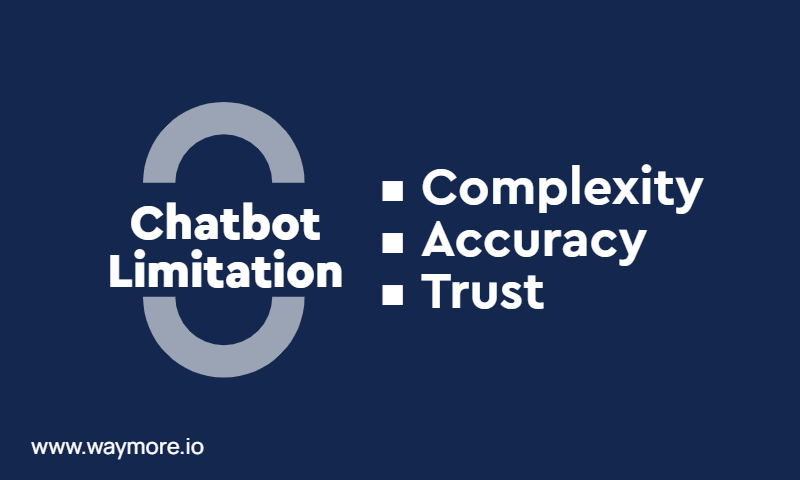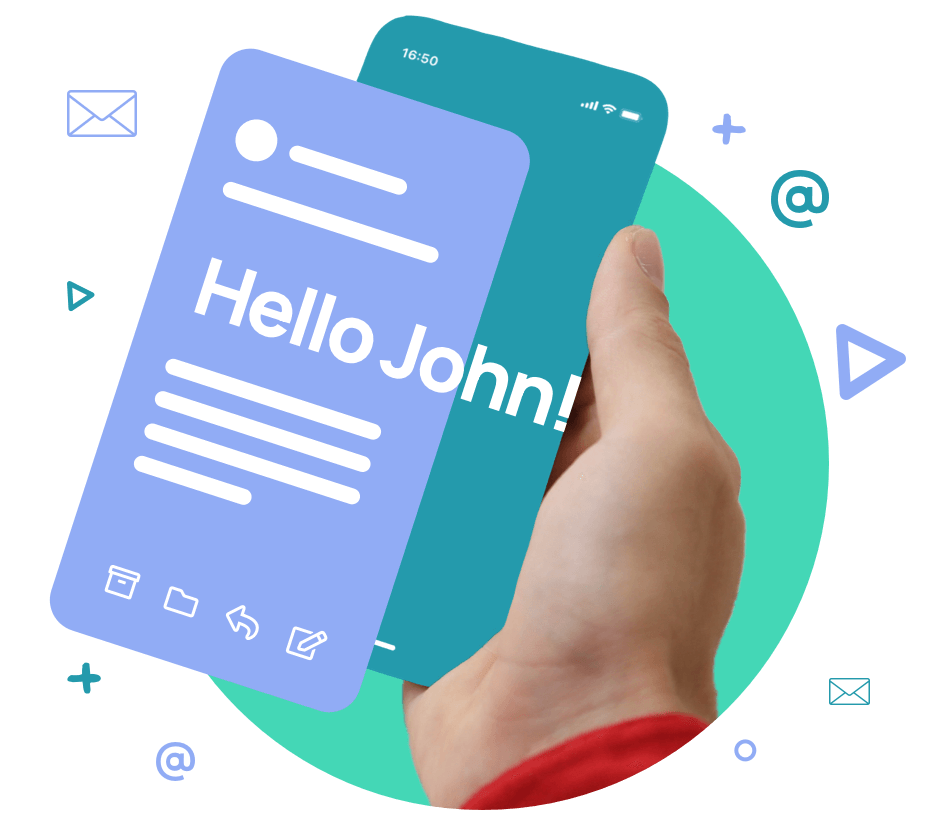Quick Links
What is Chatbot AI?
A chatbot is a software application that can interact with humans using natural language, either through text or voice. They can understand the user’s input, process it, and generate a relevant and appropriate response. A chatbot can do things like check databases, search the web, or interact with other applications based on what the user asks.
Chatbot AI is an example of narrow AI, as it can perform specific tasks related to natural language communication. Chatbot AI uses smart techniques, like learning from data and understanding language, to have realistic conversations. Machine learning is a subfield of AI that deals with creating systems that can learn from data and improve their performance over time.
Types of Chatbots
Differentiate chatbots based on criteria such as their intelligence level, interface type, data usage, operating domain, and platform.
Rule-based chatbots
These are chatbots that follow predefined rules and scripts to handle user queries. They can only respond to specific keywords or phrases that match their rules. They cannot handle complex or ambiguous queries, nor can they learn from user feedback.
Machine learning chatbots
These are chatbots that use machine learning algorithms to learn from user data and feedback. They can handle more complex and varied queries, as well as generate more natural and personalized responses. They can also adapt to user preferences and behavior over time. Chatbot are more difficult to build and maintain, but they have more functionality and flexibility.
Text-based chatbots
These are chatbots that use text as the main mode of communication. They can interact with users through text messages, emails, or web pages. They are the most common and widely used type of chatbots, as they are easy to access and use, and can work on any device and platform. An example of a text-based chatbot is a news chatbot that can send users the latest news and headlines based on their interests and preferences.
Voice-based chatbots
These are chatbots that use voice as the main mode of communication. They can interact with users through voice calls, voice messages, or smart speakers. They are less common and widely used than text-based chatbots, as they require more advanced technology and infrastructure, and can face more challenges and limitations, such as noise, accents, or dialects.
Predefined chatbots
These are chatbots that combine both rule-based and machine learning approaches to create a more balanced and robust chatbot. Predefined chatbots can use rules for simple and common queries, and machine learning for complex and rare queries. They can also use rules to guide and constrain the machine learning process, and machine learning to improve and refine the rules.
Multimodal chatbots
These are chatbots that use multiple modes of communication, such as text, voice, images, videos, or gestures. They can interact with users through multiple channels and devices, such as smartphones, tablets, laptops, or wearables. They are the most advanced and sophisticated type of chatbots, as they can provide more rich and immersive experiences, and can cater to different user needs and preferences.
Open-Domain chatbots
These chatbots can address any subject or domain that the user wishes to discuss. They can engage in casual and general conversations with users, such as chatting about the weather, sports, or movies. They can also provide users with information or entertainment, such as facts, jokes, or stories.
Closed-domain chatbots
These are chatbots that can handle only a specific topic or domain that the user wants to talk about. They can provide users with specific services or functions, such as booking, ordering, or scheduling. They can also answer users’ questions or requests related to a specific domain, such as banking, education, or health care.
Platform-specific chatbots
These are chatbots that are built and deployed on a specific platform or channel, such as Facebook Messenger, WhatsApp, Slack, or Telegram. They can leverage the features and functionalities of the platform, such as buttons, menus, cards, or stickers, to enhance the user experience and interaction. They can also access the user data and context from the platform, such as name, location, or history, to personalize the chatbot response and behavior.
Platform-independent chatbots
These are chatbots that are built and deployed on a standalone platform or channel, such as a website, a mobile app, or a smart speaker. They can have more control and flexibility over the chatbot design and functionality, such as the interface, the logic, or the data.
Benefits of Chatbots
- Convenience: Chatbots can provide users with instant and 24/7 access to information and services, without the need to wait for human agents, download apps, or visit websites. Users can interact with chatbots using their preferred mode and channel of communication, such as text, voice, or images. Chatbots can also handle multiple requests and users at the same time, without compromising the quality or speed of the service.
- Personalization: Chatbots can provide users with personalized and tailored experiences, based on their preferences, behavior, and context. Chatbots can remember user data and history, and use them to customize the chatbot response and behavior. Chatbots can get better over time by using user data and feedback, offering more relevant and accurate services.
- Engagement: Chatbots can provide users with engaging and interactive experiences, that can increase user satisfaction and loyalty. Chatbots can use natural language and emotions to mimic human conversations and build rapport with users. Chatbots can also use rich media and gamification to enhance the user experience and interaction. Chatbots can also share information and entertainment, like facts, jokes, or stories, to keep users interested and entertained.
-
4. Efficiency: Chatbots can provide businesses with efficient and cost-effective solutions, that can improve their productivity and profitability. Chatbots can automate repetitive and mundane tasks, such as answering FAQs, collecting data, or scheduling appointments, and free up human resources for more complex and creative tasks. Chatbots can also reduce human errors and inconsistencies, and provide more consistent and reliable services. Chatbots can also scale up or down according to the demand and traffic, and provide more flexible and adaptable services.
Limitations of Chatbots
- Complexity: Chatbots may have trouble with difficult questions that need more knowledge and skills, like reasoning or creativity. Chatbots can also face difficulty in dealing with multiple topics or domains, that require more integration and coordination. Chatbots can also face difficulty in maintaining long and coherent conversations, that require more context and memory.
- Accuracy: Chatbots can face errors and failures in understanding and generating natural language, due to the variability and diversity of natural language, such as grammar, syntax, semantics, pragmatics, or slang.
- Trust: Chatbots can face issues and concerns in building and maintaining trust and credibility with users, due to the lack of transparency and accountability of the chatbot design and functionality, such as the logic, the data, or the source.
How to Implement Chatbot AI
Planning
This is the first and most important step in Chatbots AI for Beginners, where you define the purpose, scope, and goals of your chatbot. We need to identify the target audience, the use case, the domain, and the platform of your chatbot. You also need to research the market, the competitors, and the best practices of chatbot AI. You also need to set the metrics and criteria to measure the success and performance of your chatbot.
Designing
This is the second and most creative step, where you design the personality, the interface, and the functionality of your chatbot. We need to create the persona, the tone, and the style of your chatbot. You also need to create the flow, the logic, and the content of your chatbot. You also need to create the mockups, the prototypes, and the wireframes of your chatbot. This is the basic functionality in Chatbots AI for Beginners
Developing
This is the third and most technical step,in Chatbots AI for Beginners, where you develop the code, the data, and the technology of your chatbot. We can choose the tools, the frameworks, and the platforms to build your chatbot. You also need to choose the methods, the techniques, and the algorithms to implement your chatbot. You also need to collect, process, and analyze the data and the feedback to train and test your chatbot.
Deploying
This is the fourth and most crucial step, where you deploy, launch, and promote your chatbot. You need to test, debug, and optimize your chatbot before releasing it to the public. We can also monitor, evaluate, and improve your chatbot after launching it to the users. You also need to market, advertise, and distribute your chatbot to reach more users and customers.
Maintaining
This is the fifth and most ongoing step, where you maintain, update, and enhance your chatbot. You need to provide support, service, and assistance to your users and customers. You also need to gather, analyze, and act on the user data and feedback. We also need to add, modify, and delete the features and functions of your chatbot.
The above 5 steps are important in Chatbots AI for Beginners
Applications of Chatbots
Chatbots can be used for many purposes, such as customer service, e-commerce, education, entertainment, and more. One of the most popular chatbot applications is chatbot marketing, which involves using chatbots to promote products, generate leads, increase conversions, and build customer loyalty. Chatbot marketing can help businesses reach their target audience, personalize their messages, and automate their marketing campaigns.
E-commerce: Chatbots can help users browse, compare, and buy products from online stores, using natural language and rich media. Chatbots can also provide users with product recommendations, reviews, and discounts, based on their preferences and behavior. Chatbots can also help users with post-purchase services, such as tracking, delivery, or returns. An example of an e-commerce chatbot is Shopify Chat, a chatbot that helps Shopify merchants sell products and provide customer service through Facebook Messenger.
Customer service: Chatbots can help users with their queries and requests related to a product or service, using natural language and emotions. They can also provide users with FAQs, tips, and tutorials, to help them use the product or service better. Chatbots can also help users with feedback and surveys, to help them improve the product or service.
Education: Chatbots can help students learn and study various subjects and topics, using natural language and gamification. Chatbots can also provide students with quizzes, tests, and assignments, to help them assess their knowledge and skills. Chatbots can also provide students with feedback and guidance, to help them improve their learning and performance.
Health care: Chatbots can help users with their health and wellness needs, using natural language and empathy. Chatbots can also provide users with diagnosis, treatment, and prevention, based on their symptoms and conditions. Chatbots can also provide users with medication, appointment, and reminder, to help them manage their health and wellness
How Chatbot AI act in Future?
Chatbot AI is a rapidly evolving and expanding field, that has a lot of potential and opportunities for the future, such as:
More intelligent and human-like chatbots
Chatbots will become more intelligent and human-like, as they will be able to handle more complex and diverse queries, generate more natural and personalized responses, and maintain longer and coherent conversations. Chatbots will also be able to use more advanced techniques and methods from AI, such as reasoning, inference, or creativity, to provide more value and insight to users.
More multimodal and immersive chatbots
Chatbots will become more multimodal and immersive, as they will be able to use multiple modes and channels of communication, such as text, voice, images, videos, or gestures. Chatbots will also be able to use more rich and interactive media and elements, such as animations, sounds, or holograms, to enhance the user experience and interaction. Chatbots will also be able to use more devices and platforms, such as smartphones, tablets, laptops, wearables, or smart glasses, to reach more users and customers.
More ethical and Responsible chatbots
Chatbots will become more ethical and responsible, as they will be able to follow and respect the ethical principles and guidelines of chatbot AI, such as transparency, accountability, privacy, security, authenticity, or identity. Chatbots will also be able to protect and respect the rights and interests of users and customers, such as consent, choice, control, or feedback. Chatbots will also be able to prevent and mitigate the risks and harms of chatbot AI, such as bias, discrimination, manipulation, or deception
In conclusion, our tutorial has provided a foundational understanding of chatbot ai for beginners. From grasping the basic concepts to exploring practical applications, we’ve navigated the landscape of artificial intelligence in chatbot technology.
Begin your learning journey with our beginner’s tutorial now.
As you begin, remember that AI chatbots can greatly improve different industries and make user experiences better. Stay curious, keep learning, and unlock the possibilities that AI chatbots offer in the dynamic world of technology.
If you want to learn more, reach out to the experts at WayMore today.






